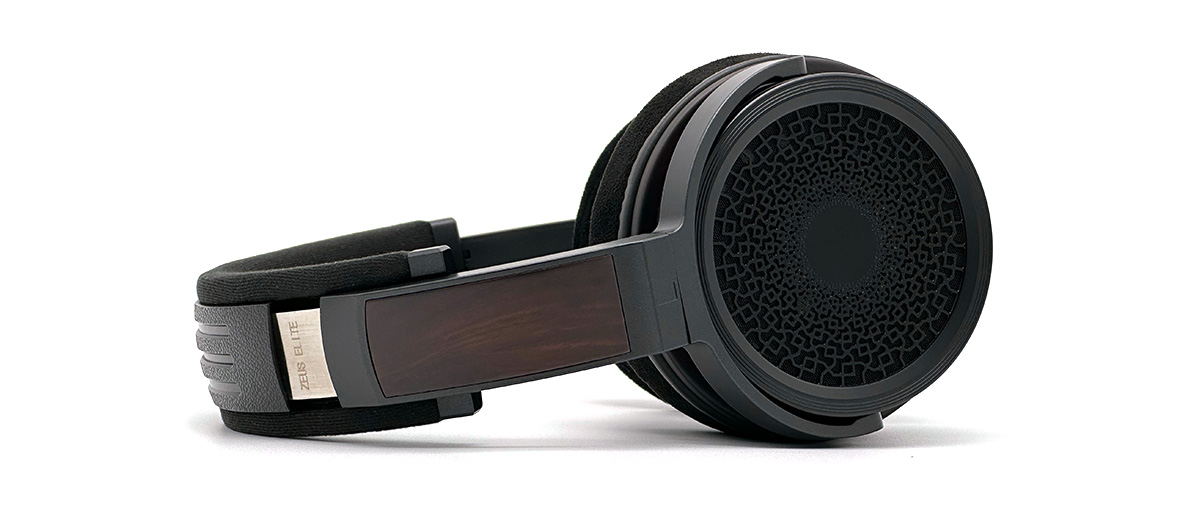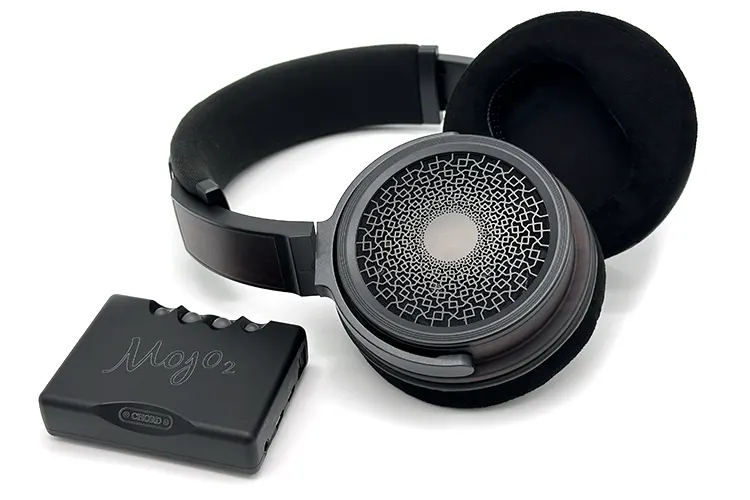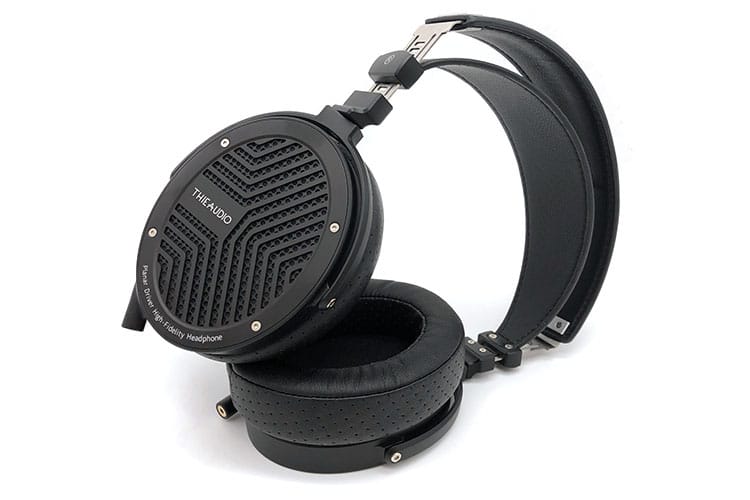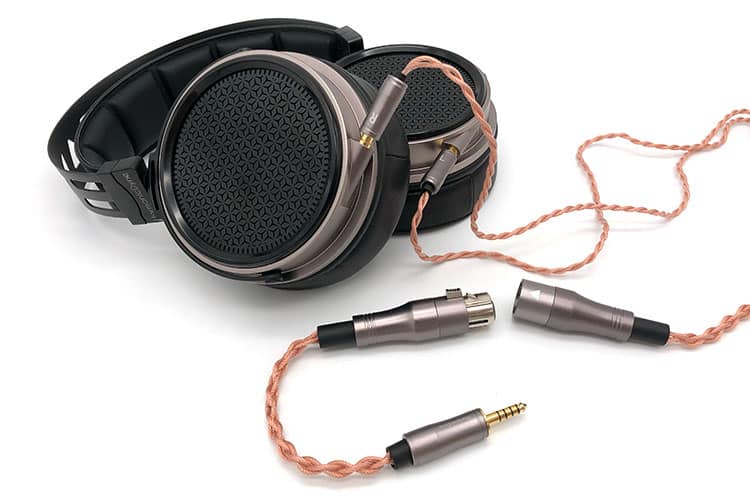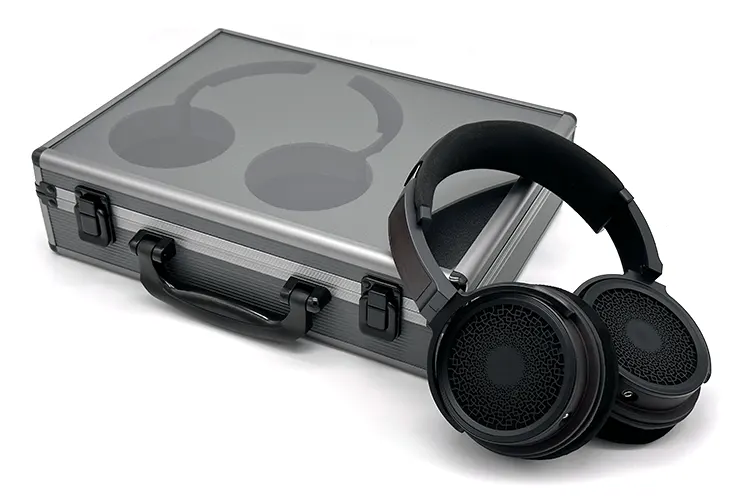Synergy
Efficiency
It may seem natural to assume that with a bundled full-sized XLR cable and no single-ended adaptors, a powerful amplifier is required to energize the Zeus Elite.
Reading through the specs though would reveal that to run the 50mm dynamic drivers portable equipment should be more than sufficient.
Even more efficient than the original Zeus, the new composite drivers of the Zeus Elite drop their impedance to 32Ω while increasing sensitivity to 105 dB @1kHz. This however will make pairing with powerful desktop amplifiers that have a noise floor at low volumes more challenging.
With the Chord Electronics Mojo 2 and the Zeus Elite adapted to SE listening, I was already happy a couple of clicks below the high gain setting, only pushing it upwards on quiet songs.
The EarMen ST-Amp has more power than the Mojo 2 at 1.85W on the balanced side so I stayed below the quarter setting most of the time.
Pairings
To make sure I was pushing out any last bit of information the Zeus Elite could provide, I initially did the listening impressions using a Burson Conductor 3 Reference as the source. It is honestly a bit overkill for the occasion as I enjoyed almost the same level of performance when I plugged the cans into the EarMen ST-Amp and Chord Electronics Mojo 2.
Among the two DAC/Amps I mentioned last, the ST-Amp showed a tighter focus when it comes to rumbling notes. The Mojo 2 introduced a softer punch to the Zeus Elite, but its distinctive subtleties filled up the room with more inspiring substance.
Embodying a plumper combination, the Zeus Elite filters lyrics to have a juicy timbre when paired with the Mojo 2. On the other hand, the ST-Amp stayed bristly and subtler in its delivery.
Since the ST-Amp has a thinner body even though it gets brighter, EarMen made it possible for instruments to disperse with more airiness. The Zeus Elite makes it hard for the same experience to happen with the Mojo 2.
Where the Mojo 2 excelled in its pairing with the Zeus Elite is the realism it created when rendering a live audience. Aside from a taller staging area, the Mojo 2 layered a bit better than the ST-Amp.
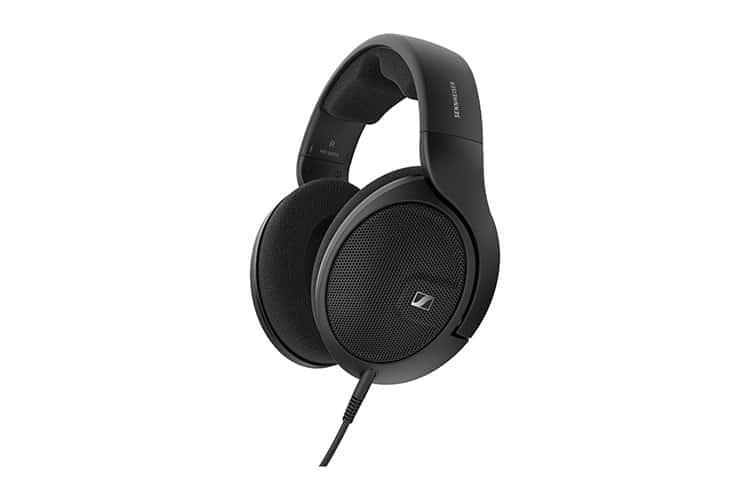
Select Comparisons
Sennheiser HD 560s
Technical
Both manufacturers are a bit discrete about the materials they use to produce the headphones’ diaphragm. But chasing a different sonic target, Sennheiser shared that the all-new 120Ω transducers of the HD 560s have been developed for reference listening tying some of its roots to the HD 660s.
It may be slightly harder to drive than the Zeus Elite but the HD 560s should be able to dig deeper into the sub-bass down to 6Hz. And if indispensable, the lone twist locking jack on the left ear cup doesn’t make it obvious but the HD 560s is also capable of running balanced.
Trying to further improve the acoustic performance of the HD 560s, Sennheiser replicates the triangular listening position used by loudspeaker setups. Where the Zeus Elite faces the drivers directly to the ear, the HD 560s are placed at an angle.
Design
HarmonicDyne is the company that went more liberal with the material choices during the design stage. Assembled using only matte-finished plastic all over, the HD 560s may have the lighter net weight at 240g but there’s less texture and visual appeal to expect from it as well.
The headband of the HD 560s needs to take a while to break in for the clamping force to soften which won’t be a concern for Zeus Elite owners. Softer ear cushions also increase the premium feel of the Zeus Elite out of the box.
The angled drivers of the HD 560s however make sure that my ear doesn’t touch the inside of the cups.
Performance
The HD 560S has a more linear tuning served together with finer images and a blacker background. This balance allows a more open sound for throwing farther-sounding images more easily.
Tackling deep blows differently, the Zeus Elite makes the HD 560s appear lowkey. While there’s no defending the lack in quantity, the low-end extension is still observable owing to its tighter dispersion.
This gives a better definition of a bassline when compared to the colored thump of the Zeus Elite.
The HD 560s show a brighter tendency for vocals which may cause faster ear fatigue. On the other hand, combining a sweet impression with sophisticated resolution, the Zeus Elite is the one that shows it is not just muscle when the dynamic qualities hit the same note.
Having a wider stage, the HD 560s grants the much-needed space for an electric guitar to separate better with vocals and neighboring instruments. The Zeus Elite may not be as delicately placed in open space as the HD 560s but it is noticeably more outlined.
Thieaudio Wraith
Technical
With a massive 97mm planar driver to start, the Wraith dwarfs the 50mm dynamic drivers of the Zeus Elite. The difference in tech needs to be noted though since it is relatively uncommon for dynamic drivers to go much larger than 50mm in diameter.
For a planar set, the Wraith is quite efficient at 23Ω impedance and 101 dB @1kHz sensitivity. This isn’t that far from the Zeus Elite making both headphones reasonably compatible with portable sources.
The Wraith however can only reproduce a more conservative 20Hz-40kHz frequency response but given the typical ear taps out below 20kHz this shouldn’t give any cause for concern.
Design
Even though both headphones have a spectral hue, the zebra wood applied on the Zeus Elite and its more ornate side panel will probably cause it to attract a larger audience.
The Wraith keeps a tougher and heavier steel build that’s enhanced by visible screws. And with a suspension-style strap, the metal where it notches is bent inward giving the headphones a distinct profile that’s less conventional than the Zeus Elite.
The ear pads of the Zeus Elite may be less deep but I almost always prefer more breathable materials such as suede over leather. Thieaudio tried to be creative though with the Velcro quick swap method.
Performance
The serious face of the Wraith translates to how it also shows concern in balancing bass notes not just for pleasure but also for critical listening sessions. So, it may not be as rich and sweet, but the Wraith delivers a cleaner image injected with a tighter punch and a more fleeting dispersion of notes.
More neutral than the Zeus Elite, the Wraith gives voices a drier tonality. It impresses in image placement and layering given the Zeus Elite creates taller images that are set in a background that’s not as pitch-black.
It’s still not all roses for the Wraith since it sometimes heavily downplays the breathier regions so notes can sound flat. This doesn’t mean the detail is lost as I get a more sophisticated ringing on it with the only issue of the timbre being less organic.
Horns burst with more get-up-and-go on the Wraith but its recessed presence brings the attack to a lower level than the Zeus Elite. Between the two, the Wraith sways the body with a deeper and thicker tone.
HarmonicDyne G200
Technical
Entering the planar technology market with its gigantic 102mm nanocomposite diaphragm, the G200 is an ambitious project for HarmonicDyne. Bending some traditional rules associated with planar drivers, the G200 is a premium product expected to perform just as well in portable listening scenarios.
A close parallel to why the Zeus Elite uses two layers of composite sheets glued to one another in its dynamic drivers, the G200 utilizes an isokinetic magnetic field design to tame the vibrations. The approach causes uniformity in diaphragm movement for reduced distortion in both situations.
Design
Featuring a fully restyled suspension-style headband, the G200 uses multilayer carbon as the base material. Instead of wood and plastic, the cups and yokes are made from dense aluminum giving off a more premium sheen.
The rounded cups of both headphones follow the same basic cuts and angles. But housing massive drivers, the G200 adds a few more millimeters in diameter over the Zeus Elite.
With bigger cups, the earpads of the G200 also follow suit. The headphone itself is heavier though so even though the pads are more comfortable, the light clamp of the G200 may be unsettling to some causing the headband to slide sometimes.
Performance
The G200 isn’t as bass-forward as the Zeus Elite. Instead, the planar drivers of the G200 get you the definition required to harness subtle details that are absent on the Zeus Elite. With its crisper delineation, basslines whether expansive or lean, will be seen through a more transparent lens.
For me though, as vocals and strings start to come in, the Zeus Elite is the one showing better respect with accuracy. Guitars are better layered on the G200 but its scooped midrange relaxes the sound too much creating an unnatural field of sound.
Having a recessed energy for the treble region though helps in tricking the soundstage to appear wider. But with a more dynamic song, I sometimes feel that instruments are trying to scream from a distance making it less important to the mix.
Our Verdict
The HarmonicDyne Zeus Elite couldn’t have come at a better time since I’ve been personally hunting down a warm-sounding set to hang together with my other daily drivers. The plush mystique happening throughout the build and design also helps to increase the desirability of the headphones.
The key change in the HarmonicDyne Zeus Elite from the original Zeus is those well-liked beryllium drivers. However, I feel the switch should not upset their original fans.
While I believe it is fit to be called ‘Elite’, it’s still not fair to pit it against headphones that punch above its price bracket given some technical challenges it possesses. What it lacks in airiness and layering, it does make up for with a strong personality.
HarmonicDyne Zeus Elite Technical Specifications
- Acoustic architecture: Open Back
- Drivers: Ф50mm Dynamic
- Connectors: Dual 3.5mm
- THD: 0.25%@1KHz 100dB SPL
- Sensitivity: 105dB/Vrms@1KHz
- Impedance: 32Ω@1KHz
- Frequency Response: 10-70KHz (Free Field)
- Ear cup: Zebra Wood
- Ear-pads: Suede, Fabric, Leather
- Cable Details: 4.4mm Balanced Cable; XLR-4pin Balanced Cable
- Dimensions: 210*175*105(mm)
- Weight: Approx.360g

